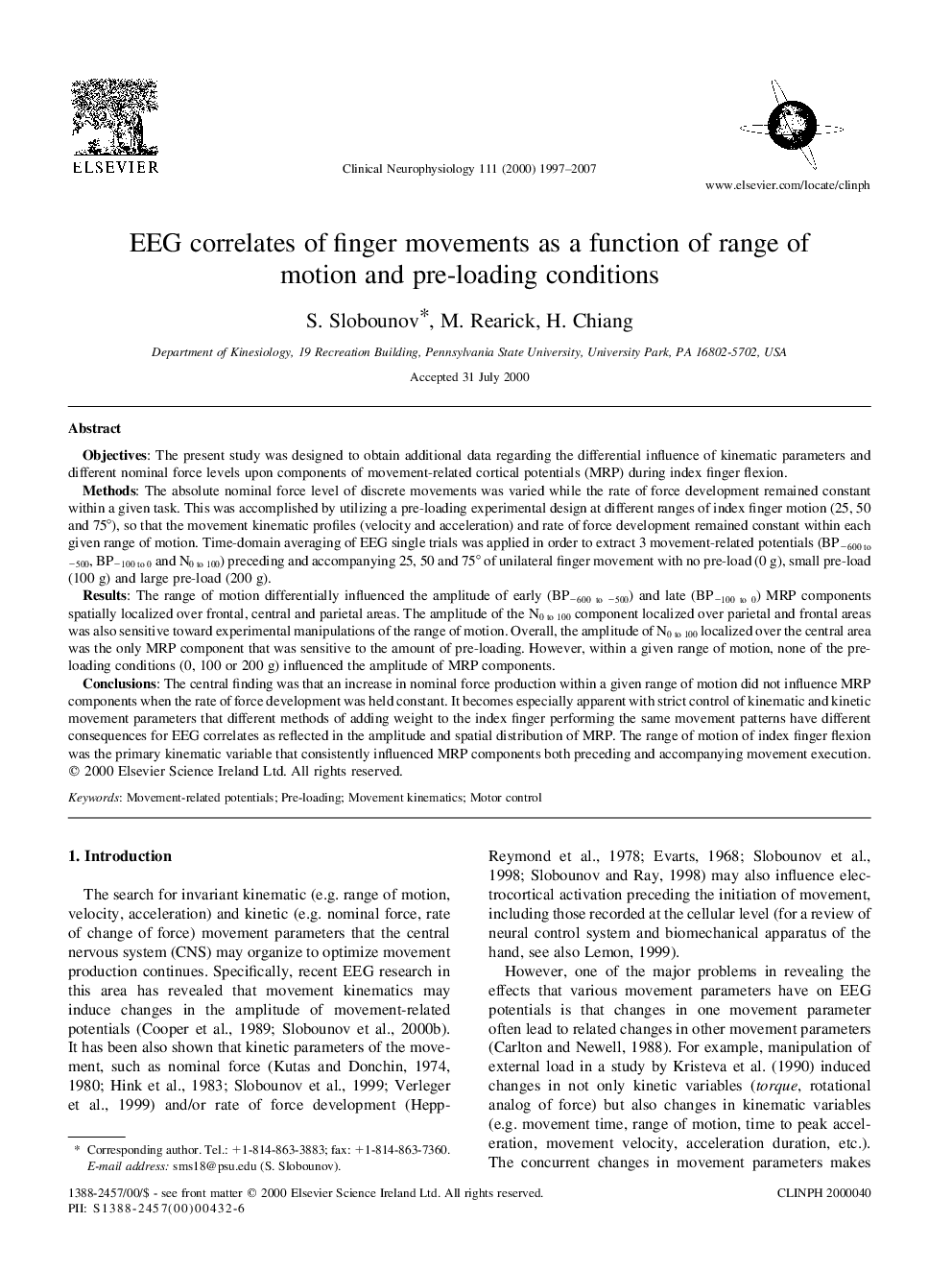| Article ID | Journal | Published Year | Pages | File Type |
|---|---|---|---|---|
| 3049176 | Clinical Neurophysiology | 2007 | 11 Pages |
Objectives: The present study was designed to obtain additional data regarding the differential influence of kinematic parameters and different nominal force levels upon components of movement-related cortical potentials (MRP) during index finger flexion.Methods: The absolute nominal force level of discrete movements was varied while the rate of force development remained constant within a given task. This was accomplished by utilizing a pre-loading experimental design at different ranges of index finger motion (25, 50 and 75°), so that the movement kinematic profiles (velocity and acceleration) and rate of force development remained constant within each given range of motion. Time-domain averaging of EEG single trials was applied in order to extract 3 movement-related potentials (BP−600 to −500, BP−100 to 0 and N0 to 100) preceding and accompanying 25, 50 and 75° of unilateral finger movement with no pre-load (0 g), small pre-load (100 g) and large pre-load (200 g).Results: The range of motion differentially influenced the amplitude of early (BP−600 to −500) and late (BP−100 to 0) MRP components spatially localized over frontal, central and parietal areas. The amplitude of the N0 to 100 component localized over parietal and frontal areas was also sensitive toward experimental manipulations of the range of motion. Overall, the amplitude of N0 to 100 localized over the central area was the only MRP component that was sensitive to the amount of pre-loading. However, within a given range of motion, none of the pre-loading conditions (0, 100 or 200 g) influenced the amplitude of MRP components.Conclusions: The central finding was that an increase in nominal force production within a given range of motion did not influence MRP components when the rate of force development was held constant. It becomes especially apparent with strict control of kinematic and kinetic movement parameters that different methods of adding weight to the index finger performing the same movement patterns have different consequences for EEG correlates as reflected in the amplitude and spatial distribution of MRP. The range of motion of index finger flexion was the primary kinematic variable that consistently influenced MRP components both preceding and accompanying movement execution.
